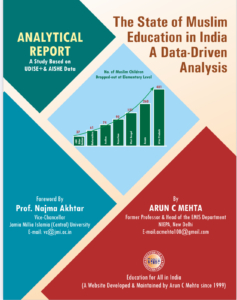Impact of GST Reforms 2025 on India’s Education Sector
Introduction
India’s Goods and Services Tax (GST), launched in 2017, revolutionized the country’s tax system by merging various indirect taxes into a unified structure. The education sector, a cornerstone of national development, has experienced both benefits and challenges under GST. The latest reforms, announced on September 3, 2025, by Finance Minister Nirmala Sitharaman and effective from September 22, 2025, introduced a streamlined two-slab GST system (5% and 18%), with a 40% rate for luxury and sin goods. These changes aim to reduce costs for households and simplify compliance, aligning with the government’s vision of economic accessibility. This article analyses how these reforms affect schools, colleges, students, teachers, coaching centers, and educational materials, while assessing their alignment with the National Education Policy (NEP) 2020’s goal of universal school education by 2030. It also explores advocacy efforts, including demands from EducationForAllInIndia.com, for making education entirely free from GST.
Historical Context of GST in Education
When GST was introduced on July 1, 2017, it replaced taxes like VAT and service tax, creating a uniform tax regime. The education sector was granted special considerations due to its societal importance:
- School Education: Core services, such as tuition fees for pre-schools, primary, and secondary education (both government and private), were exempt from GST. This included student transportation, mid-day meals, and vocational courses recognized by the National Skill Development Corporation (NSDC).
- Higher Education: Degree programs from universities and institutions approved by bodies like the UGC or AICTE were largely exempt. However, private and for-profit institutions, particularly those offering professional courses, faced an 18% GST on fees.
- Coaching and Ancillary Services: Private coaching centers, tuition classes, and online learning platforms were taxed at 18%, increasing costs for students seeking supplementary education, such as for competitive exams like JEE or NEET.
- Educational Materials: Textbooks and certain print materials were exempt, but stationery items like notebooks and pens were taxed at 12% or 18%. Ancillary services, such as catering and transportation, also carried an 18% GST.
Over the years, periodic GST rationalizations aimed to ease costs and compliance. The 2025 reforms further simplify the tax structure, offering potential relief to the education sector.
GST Reforms 2025: Impact on Education
The 2025 GST reforms consolidate the previous four-tier slab system (5%, 12%, 18%, 28%) into two primary slabs (5% and 18%), with a 40% slab for luxury goods. Below is an analysis of their impact on the education sector:
1. Schools and Colleges
- Tuition Fees: Fees for pre-school to Class 12 and recognized degree programs at universities remain GST-exempt, ensuring affordability for core education in both public and private institutions.
- Ancillary Services: Services like transportation and catering, often outsourced by schools, continue to attract an 18% GST, potentially increasing operational costs for institutions, which may be passed on to parents.
- Impact: Exemptions for tuition fees support affordability, but the 18% GST on ancillary services could strain school budgets, particularly for private institutions. Simplified tax slabs may reduce administrative burdens, allowing schools to prioritize educational quality.
2. Students and Parents
- School Supplies: Essential stationery items, such as notebooks, pencils, erasers, crayons, sharpeners, maps, globes, and educational charts, previously taxed at 12%, are now GST-exempt. Geometry boxes and mathematical instruments have been reduced from 12% to 5%. For a family spending ₹2,000 annually on stationery, this could save approximately ₹240.
- Textbooks: Educational books and printed materials remain exempt, ensuring no cost increase for essential learning resources.
- Impact: Zero GST on stationery and books reduces financial burdens for families, particularly those with limited income, enhancing access to educational materials. However, the 18% GST on transportation and catering may offset savings for families using school-provided services.
3. Teachers and Educators
- Vocational Training: NSDC-recognized programs remain exempt, supporting educators in skill development initiatives. Private vocational and professional development courses, however, are taxed at 18%.
- Impact: Exemptions for NSDC programs encourage teacher training, but the high tax on private courses may limit professional development, potentially affecting teaching quality.
4. Tuition and Coaching
- Coaching Centers and EdTech: Private tuition, coaching classes, and online learning platforms (e.g., for JEE, NEET) continue to face an 18% GST, offering no cost relief.
- Impact: The high tax rate increases costs for families investing in supplementary education, potentially limiting access for students in rural or economically weaker sections. This could hinder the growth of edtech platforms targeting mass markets.
5. Broader Education Sector
- Compliance: The simplified two-slab structure reduces administrative complexities for institutions, potentially lowering operational costs.
- EdTech Challenges: The 18% GST on online learning may slow the adoption of digital education, particularly for startups aiming to serve price-sensitive markets.
Main Items and GST Slabs in Education
| Item/Service | Old GST Rate | New GST Rate (2025) |
|---|---|---|
| School tuition fees (pre-school to Class 12) | Exempt (0%) | Exempt (0%) |
| Higher education (recognized degrees) | Exempt (0%) | Exempt (0%) |
| Private higher education/professional courses | 18% | 18% |
| Notebooks, pencils, erasers, crayons, sharpeners, maps, globes, charts | 12% | Exempt (0%) |
| Geometry boxes, school cartons, mathematical instruments | 12% | 5% |
| Textbooks and educational print material | Exempt (0%) | Exempt (0%) |
| Coaching centers, private tuition, online courses | 18% | 18% |
| Transportation and catering services | 18% | 18% |
| Vocational training (NSDC-recognized) | Exempt (0%) | Exempt (0%) |
| Bicycles, toys, sports goods | 12% | 5% |
| Buses (used for student transport) | 28% | 18% |
Alignment with NEP 2020’s Goals
The NEP 2020 aims to achieve universal, high-quality school education by 2030, emphasizing affordability, inclusivity, and skill development. The GST reforms support these objectives in several ways:
- Affordability: Zero GST on stationery and textbooks lowers costs for families, aligning with NEP’s focus on equitable access. Reduced taxes on bicycles (5%) and buses (18%) improve student mobility, particularly in rural areas.
- Formal Education: Continued exemptions for school and college fees ensure core education remains accessible, supporting universal enrollment.
- Skill Development: Exemptions for NSDC-recognized vocational training promote skill-based education, preparing students for future careers.
However, challenges persist:
- Supplementary Education Costs: The 18% GST on coaching and online learning limits access to quality preparation for competitive exams, potentially hindering NEP’s goal of holistic education.
- Ancillary Expenses: The 18% GST on transportation and catering may increase school-related costs, affecting enrollment in resource-constrained areas.
A Case for Making Education Completely GST-Free
Platforms like EducationForAllInIndia.com have been vocal in advocating for comprehensive reforms to make education more accessible. In a recent article, the site questions whether educational institutions should even be subject to GST, highlighting demands that all educational items—from tuition fees, books, ties, uniforms, and transportation to railway tickets for out-of-city travel—should be entirely free of tax. This push extends from pre-primary levels through college, higher education, and PhD programs, ensuring no student pays any GST on these essentials. The site also suggests shifting more luxury items under the 40% GST slab to offset revenue losses, while calling for coaching, tuition fees, and related services to be made tax-free.
On behalf of EducationForAllInIndia.com, here’s a compelling case for why education should be free from GST:
- Education as a Public Good and Fundamental Right: Under Article 21A of the Indian Constitution, education is a fundamental right for children aged 6-14, but the spirit extends beyond. Taxing educational services and materials treats learning as a commodity rather than a societal necessity, widening inequality in a country where per capita GDP lags far behind global leaders. Exempting GST entirely would honour this right and promote social welfare.
- Reducing Financial Burdens on Families and Institutions: Current GST rates inflate costs – such as 18% on coaching and transportation—which get passed on to students and parents, especially from low- and middle-income backgrounds. Institutions face hefty expenses on inputs without full refunds, diverting funds from infrastructure and quality improvements. A full exemption would lower fees and make education affordable, boosting enrollment and retention rates.
- Aligning with NEP 2020 and Global Standards: NEP 2020 emphasizes affordability and inclusivity to achieve universal education by 2030. Imposing GST contradicts this by hiking costs for supplementary services like online courses and hostels. Globally, many nations keep education tax-free to foster knowledge economies—India should follow suit to enhance competitiveness and support marginalized communities, including SC, ST, and Muslim groups. [
- Revenue Neutrality Through Luxury Taxation: Concerns over lost revenue can be addressed by expanding the 40% GST slab to more luxury and sin goods. This reallocation would fund exemptions without straining public finances, ensuring the government meets its “Education for All” goals while maintaining fiscal balance.
- Boosting EdTech and Innovation: High GST on coaching and online platforms stifles edtech growth, limiting access for rural students. Making these services tax-free would democratize education, encouraging innovation and aligning with digital India initiatives.
Voices like G. Viswanathan of VIT and PhysicsWallah’s Co-founder echo these demands, urging policymakers to act in Budget 2025 or future reforms. By making education GST-free, India can truly realize inclusive growth and empower its youth.
Concluding Observations
The 2025 GST reforms provide significant relief to the education sector by exempting essential stationery and maintaining fee exemptions for schools and colleges. These measures reduce financial barriers, supporting NEP 2020’s vision of universal education by 2030. The simplified tax structure also eases compliance for institutions. However, the 18% GST on coaching, online learning, and ancillary services remains a hurdle, particularly for families seeking supplementary education. Advocacy from platforms like EducationForAllInIndia.com highlights the need for complete exemptions to make education truly accessible. Further reductions in these areas could enhance inclusivity and innovation in education delivery.
Suggested Readings


